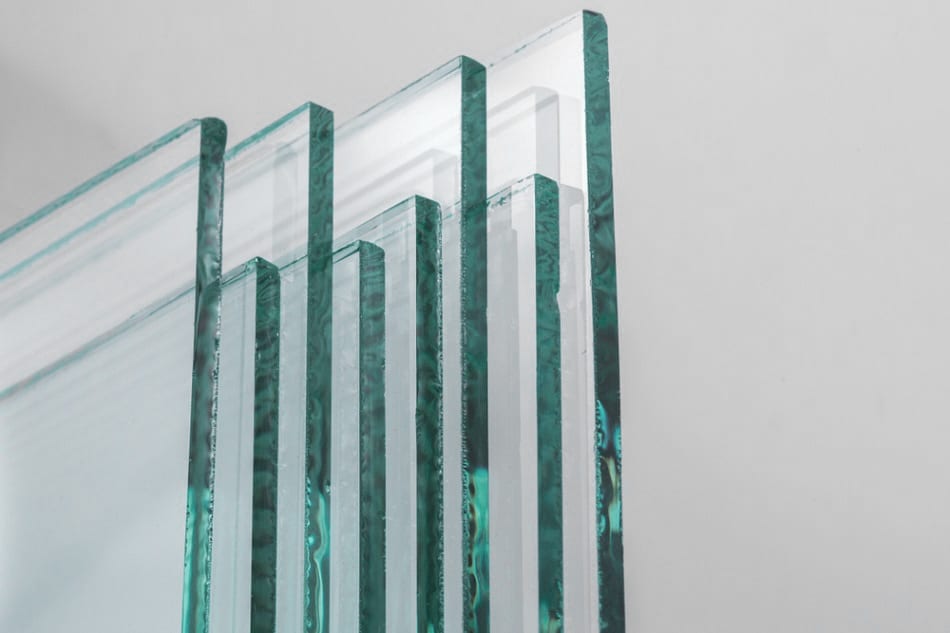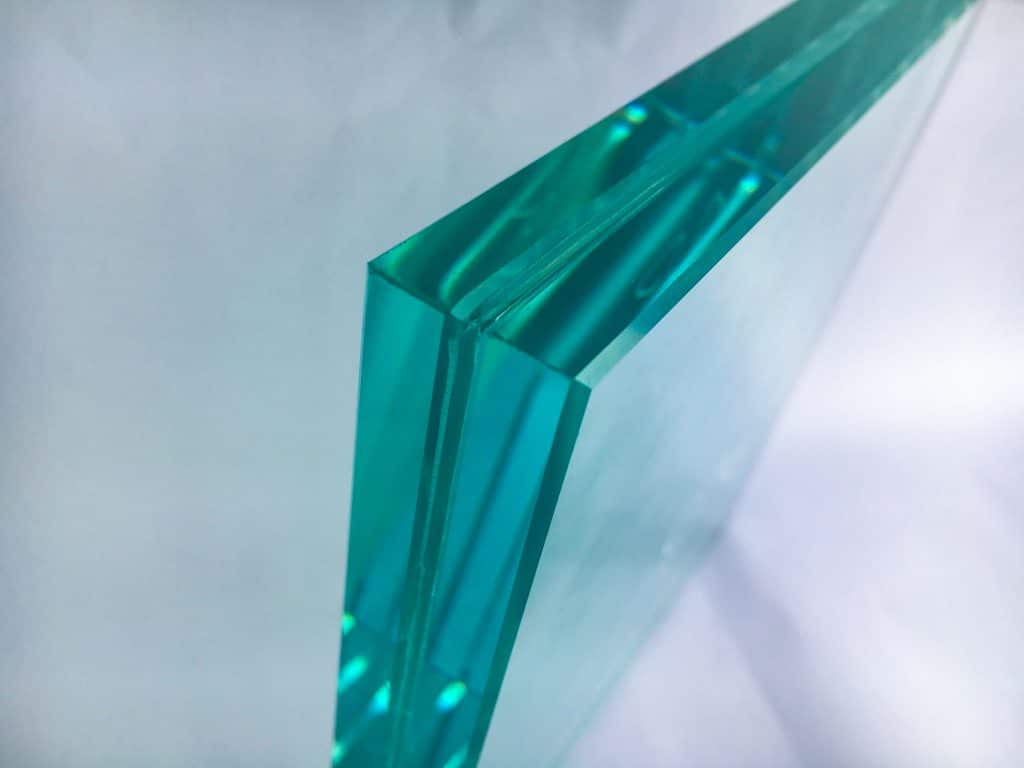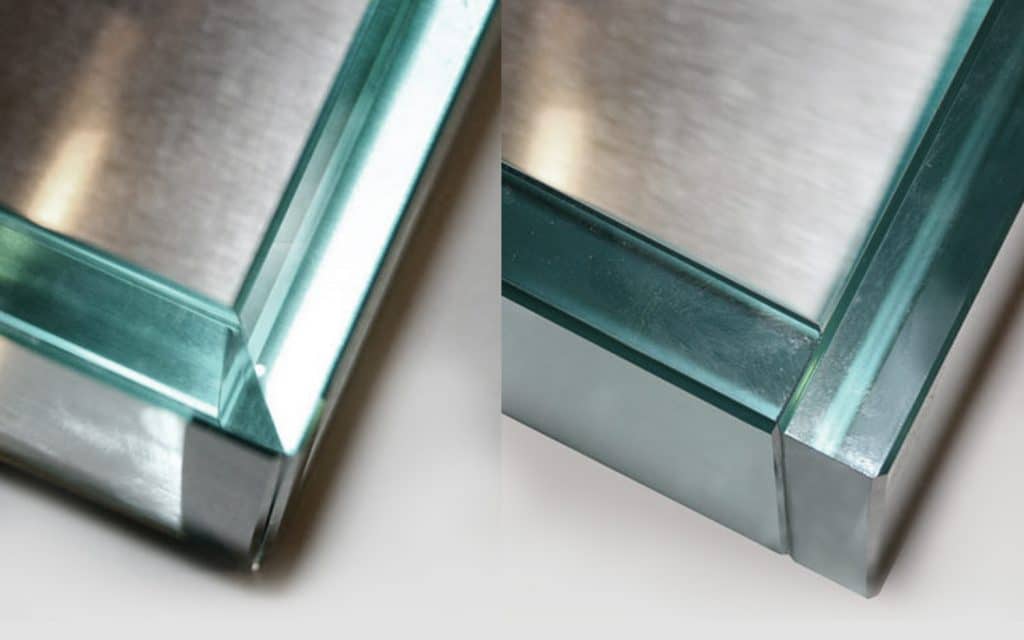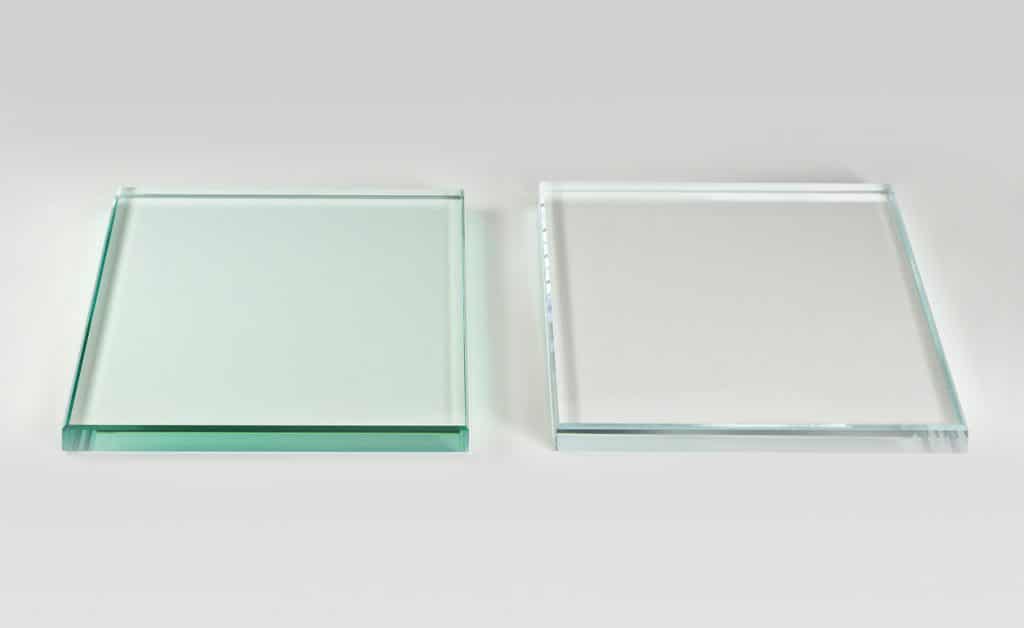August 17th, 2021
Not all glass is created equally. Whether you’re designing a retail store, restaurant, office space, or a home renovation, chances are you’re going to be using glass somewhere. And what type, how it’s produced, and how it’s assembled, can make a big difference in aesthetic, durability, and price. Here, we break down the differences in glass to help guide your decision making process on your next project:
Float Glass

Sometimes referred to as “annealed glass,” float glass gets its name from the process used to create it, in which molten glass is poured onto a tin surface. The molten glass “floats” on the tin and spreads out evenly to form a pane of glass with parallel sides. Annealing, or controlled cooling, is then applied to strengthen the glass and remove internal stresses that could cause breakage.
Float glass can be polished and cut for a variety of applications including small windows and doors. Float glass is not appropriate for high volume settings and is much less durable than tempered glass.
Tempered Glass

Tempering is the process of heating glass to increase its durability and safety. Unlike float glass, which shatters into sharp, harmful shards, tempered glass fractures into small, rounded pieces that are relatively harmless. Tempered glass is approximately 4-5 times stronger than float glass, making it ideal for residential and commercial settings that have to comply with safety requirements.
Laminated Glass

Like tempered glass, laminated glass is more durable and safer than float glass. However, laminated glass is created by sandwiching two pieces of glass between a sheet of plastic resin. Also distinct from tempered glass, laminated glass stays together after breakage.
Security is a major benefit of laminated glass, particularly in retail settings such as jewelry stores. Laminated glass can also provide sound reduction and UV protection while allowing natural light to pass through.
When planning your project, consider if the edges of your glass elements will be captured or exposed. The plastic resin in between the two pieces of glass is visible and may not be aesthetically acceptable to some.
Miter vs Butt Joints

Another element to keep in mind when selecting glass is how each piece of glass will join together. The two most common ways of joining glass are butt joints and miter joints. A butt joint is achieved when two pieces of glass simply “butt” up against each other at their ends. By contrast, a miter joint is achieved when the edge of each piece of glass is cut at a 45 degree angle, so the two pieces connect smoothly and aesthetically.
Mitered glass is traditionally considered more visually appealing than butt jointed. However, mitered glass can be more expensive and take longer to fabricate.
Low Iron Glass

Have you ever looked at the edge of a piece of glass and noticed a green hue? That’s because of iron, part of the composition of all glass. How much iron occurs in glass determines how profound this green hue will be.
Low iron glass is produced by reducing the amount of iron in the molten formula, creating a clearer, more consistent glass with less green. Low iron glass is recommended for retail displays, such as watch and jewelry showcases. Many often refer to low iron glass as “Starphire.” In fact, Starphire is the name of a glass manufacturing company that produces proprietary low iron glass products.
Conclusion
Considering what type of glass is right for your application will help make the right decision when designing your project. The above elements vary in cost, lead time, durability and aesthetic, and should be discussed in the project planning phase to ensure your project is set up for success.
About Gilbert
Gilbert is a turnkey organization that provides design, construction, and management solutions for trade show exhibits, retail, hospitality, corporate, and residential environments, and corporate events.
Learn more about our trade show services here.
July 30th, 2021
November 23rd, 2021